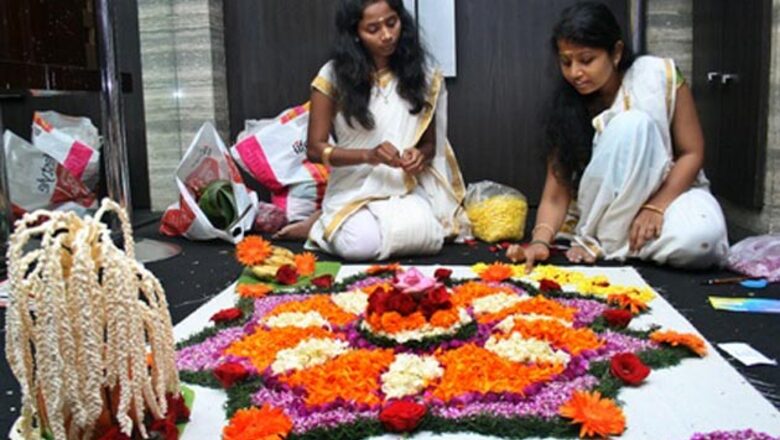
views
Thiruvananthapuram: Onam, for all its festive mood, is entwined with the rather dismal tale of King Mahabali’s exile into netherworld. As the day’s merrymaking fades out, we sigh at the knowledge of the noble King’s inevitable return to the dark world. But may be, we should revisit the legends for there is a more cheerful tale about the origins of Onam.
As we know it, the story behind Onam is that the demon king Mahabali was sent to netherworld by Lord Vishnu in his reincarnation as the dwarf brahmin Vamana. In most re-tellings of the tale we are told that Bali was sent to ‘Pathalam’, the lowest of the worlds, as punishment for his ego.
But the story as it is told in the Srimad Bhagavatam is somewhat different, say some Sanskrit scholars. Bali was not sent to Pathalam as punishment but sent to Sutalam after he was liberated from his ego.
Floral Fantasy: Red carpets may be all very well for welcoming celebrities, but to welcome Mahabali during Onam nothing less than a floral carpet will do. Pookalams or floral designs are decorated on each of the ten days preceding Thiruvonam beginning on the day of Atham star.
Some say the pookalam is made in ten rings, with each ring representing a Hindu deity. The first ring, for example, is symbolic of Ganesha; the second for Shiva-Sakthi, and so on with the tenth representing Lord Vishnu. Beginning with one ring on Atham day with only one type of flower, on the day of Thiruvonam a flower carpet with ten rings made of ten different flowers is completed.
The designs of the pookalam are also based on the nakshatra of the day. So the day of Chitira will see one type of design while Moolam day will see yet another.
Pyramids of Myth: Another characteristic element of Onam is the ‘Thrikkakarappan’ or ‘Onathappan’. Made either of clay or mud, it is a small structure in the form of a cone or a pyramid with four faces and a flattened top. It represents Vamana, the dwarf brahmin incarnation of Lord Vishnu. In some places, it represents both Mahabali and Vamana.
Usually, people place three of these structures to represent the three steps of land that Vamana asked from Mahabali. Thrikkakara in Ernakulam district is said to be the site where Vamana placed his third step, on Mahabali’s head, sending him to the world of Suthalam.




















Comments
0 comment